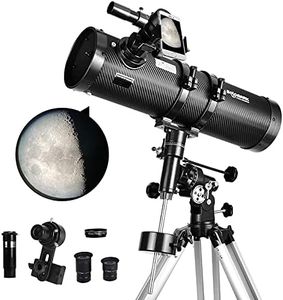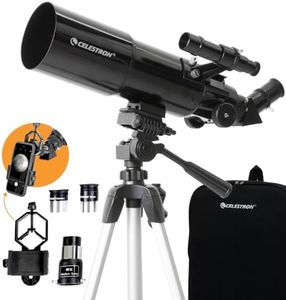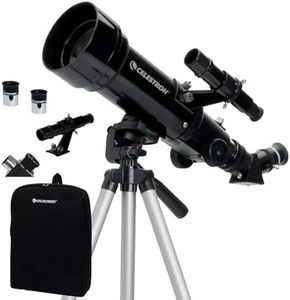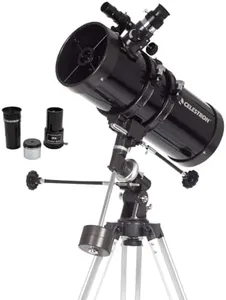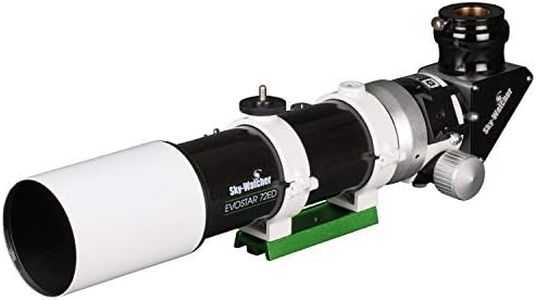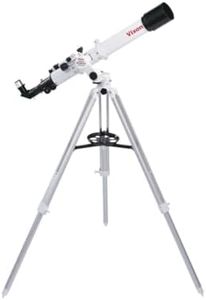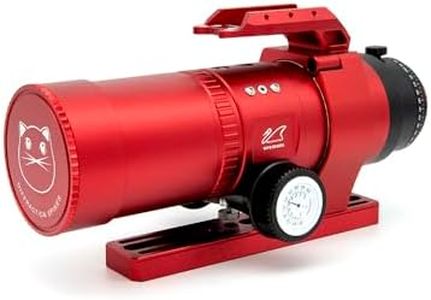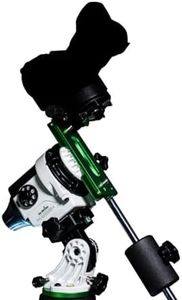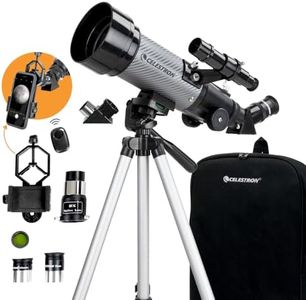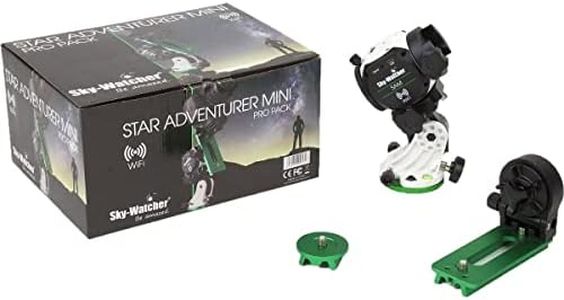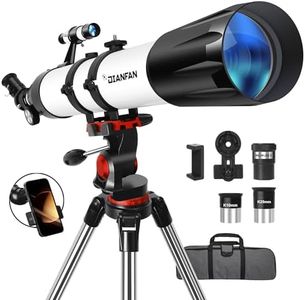We Use CookiesWe use cookies to enhance the security, performance,
functionality and for analytical and promotional activities. By continuing to browse this site you
are agreeing to our privacy policy
10 Best Telescope For Photography
From leading brands and best sellers available on the web.Buying Guide for the Best Telescope For Photography
Choosing a telescope for photography—also known as astrophotography—can be very rewarding, but it’s important to understand both your needs and the features that matter most. Start by thinking about what types of celestial objects you want to photograph, such as planets, the moon, or deep-sky objects like galaxies and nebulae. Also consider how much experience you have, as some equipment is more user-friendly than others. Assess your available space for setup and how portable you need your telescope to be. Knowing the basics of how telescopes and cameras connect, and what makes a telescope suited for imaging rather than just visual observation, sets you on the right path to making a great choice.ApertureAperture refers to the diameter of the main lens or mirror that gathers light. It is arguably the most important specification because it determines how much light the telescope can collect, which affects image brightness and detail. Larger apertures collect more light and produce clearer and more detailed images, especially important for faint deep-sky objects. Small apertures (under 80mm) can work well for the moon and planets but may struggle with dim galaxies. Medium apertures (80mm-130mm) strike a balance for beginners and casual astrophotographers. Large apertures (over 130mm) excel in capturing faint deep-sky details but can be heavier and require steadier mounts. Consider what you plan to photograph: if your main interest is bright objects like the moon and planets, smaller apertures are fine, but for photographing distant galaxies or nebulae, a larger aperture is better.
Focal LengthFocal length is the distance over which light is brought to focus in the telescope, usually measured in millimeters. This determines the magnification and field of view. Short focal lengths (under 800mm) provide wide views and are excellent for capturing large areas of the sky—great for photographing star clusters and nebulae. Medium (800mm-1200mm) give a mix of wide and narrow views, allowing for flexibility. Long focal lengths (over 1200mm) are ideal for zooming in on planets or small, distant objects with lots of detail, but can be more sensitive to vibration and tracking errors. Your choice should depend on the main type of sky photography you want to do: wide-field astrophotography uses shorter focal lengths, while planetary imaging benefits from longer ones.
Mount TypeThe mount is the structure that holds your telescope steady and allows it to move across the sky. The two common types are alt-azimuth and equatorial. Alt-az mounts are simple, moving up-down and left-right, and are great for visual observation and short camera exposures. Equatorial mounts, however, can track the stars’ movement across the sky, which is crucial for long-exposure astrophotography to prevent star trails. There are manual and motorized versions; motorized (or computerized, called 'GoTo') equatorial mounts automatically track and help you find objects. For serious astrophotography, an equatorial mount is a must as it provides smooth, accurate tracking necessary for capturing clear images over time.
Optical DesignTelescopes come in various optical designs, such as refractor, reflector, and compound (catadioptric). Refractors use glass lenses and are known for sharp, high-contrast images, especially at smaller sizes, making them popular for wide-field and planetary photography. Reflectors use mirrors, provide large apertures at a lower cost, and are good for faint, deep-sky objects, though they require occasional mirror alignment ('collimation'). Compound telescopes combine lenses and mirrors, offering versatility and compactness, making them a good all-rounder. The right design depends on your size/weight preferences and the types of celestial targets you most want to photograph.
Camera CompatibilityNot all telescopes are equally easy to connect with cameras. Look for telescopes that have threads or adapters for common camera mounting systems—like T-rings for DSLRs or connections for specialized astro-cameras. Some entry-level telescopes are designed only for visual use and may not offer stable, secure attachment points for cameras. If you plan to use a specific camera, check that adapters are available for your camera model and that the telescope supports prime focus photography (attaching the camera directly, with no eyepiece in between). Ensuring compatibility ahead of time saves frustration and makes setup much easier.
Focuser QualityThe focuser is the part you use to achieve sharp focus with your camera. High-quality, smooth focusers are extremely helpful for photography because they allow precise focusing—a necessity for clear photos. Single-speed focusers are simple and can work well, but a dual-speed (fine focus) mechanism makes it easier to get critical focus, especially at higher magnifications. Rigid, well-made focusers are also better at holding heavier cameras without slipping, which matters when shooting long exposures. If you intend to use heavy equipment or want maximum sharpness, prioritize a well-built focuser.
Portability and WeightAstrophotography equipment can quickly become bulky and heavy. Consider where you plan to do your photography—at home, under dark skies, or while traveling. Small, lightweight telescopes and mounts are easier to carry and set up, making them better for travel or casual use. Heavier, more substantial setups stay steady during long exposures but are better suited for a permanent home setup. Your needs here should be guided by how much you are willing (and able) to move and transport your gear.

